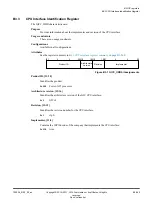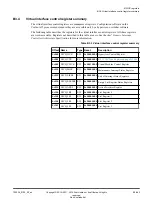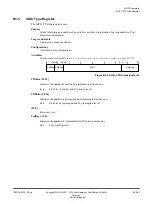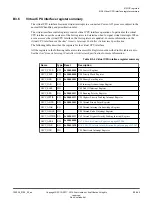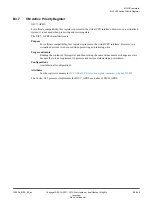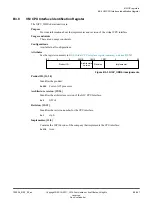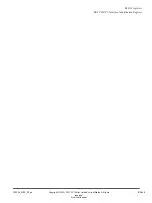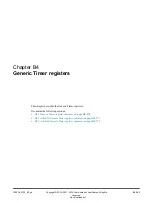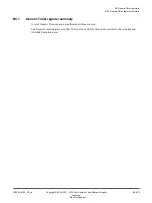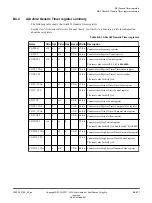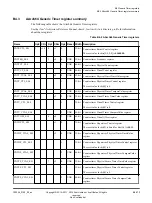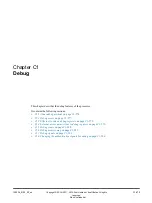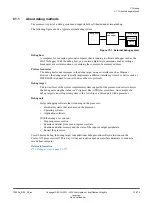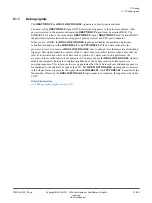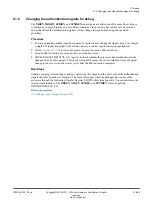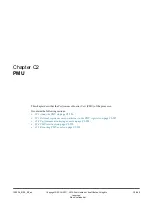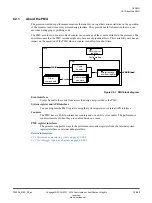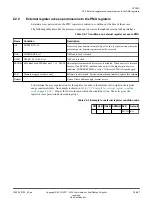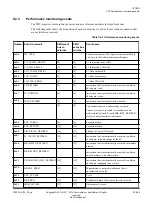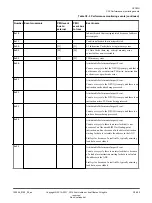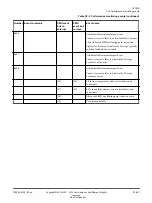
C1.1
About debug methods
The processor is part of a debug system and supports both self-hosted and external debug.
The following figure shows a typical external debug system.
Debug target
Protocol
converter
Debug host
Processor
Debug
unit
Figure C1-1 External debug system
Debug host
A computer, for example a personal computer, that is running a software debugger such as the
DS-5 Debugger. With the debug host, you can issue high-level commands, such as setting a
breakpoint at a certain location or examining the contents of a memory address.
Protocol converter
The debug host sends messages to the debug target using an interface such as Ethernet.
However, the debug target typically implements a different interface protocol. A device such as
DSTREAM is required to convert between the two protocols.
Debug target
The lowest level of the system implements system support for the protocol converter to access
the debug unit using the
Advanced Peripheral Bus
(APB) slave interface. An example of a
debug target is a development system with a test chip or a silicon part with a processor.
Debug unit
Helps debugging software that is running on the processor:
• Hardware systems that are based on the processor.
• Operating systems.
• Application software.
With the debug unit, you can:
• Stop program execution.
• Examine and alter process and coprocessor state.
• Examine and alter memory and the state of the input or output peripherals.
• Restart the processor.
For self-hosted debug, the debug target runs additional debug monitor software that runs on the
Cortex
‑
A35 processor itself. This way, it does not require expensive interface hardware to connect a
second host computer.
Related information
C1.2 Debug access
on page C1-577
C1 Debug
C1.1 About debug methods
100236_0100_00_en
Copyright © 2015–2017, 2019 Arm Limited or its affiliates. All rights
reserved.
C1-576
Non-Confidential
Summary of Contents for Cortex-A35
Page 4: ......
Page 18: ......
Page 26: ......
Page 27: ...Part A Functional Description ...
Page 28: ......
Page 145: ...Part B Register Descriptions ...
Page 146: ......
Page 573: ...Part C Debug ...
Page 574: ......
Page 845: ...Part D Appendices ...
Page 846: ......

